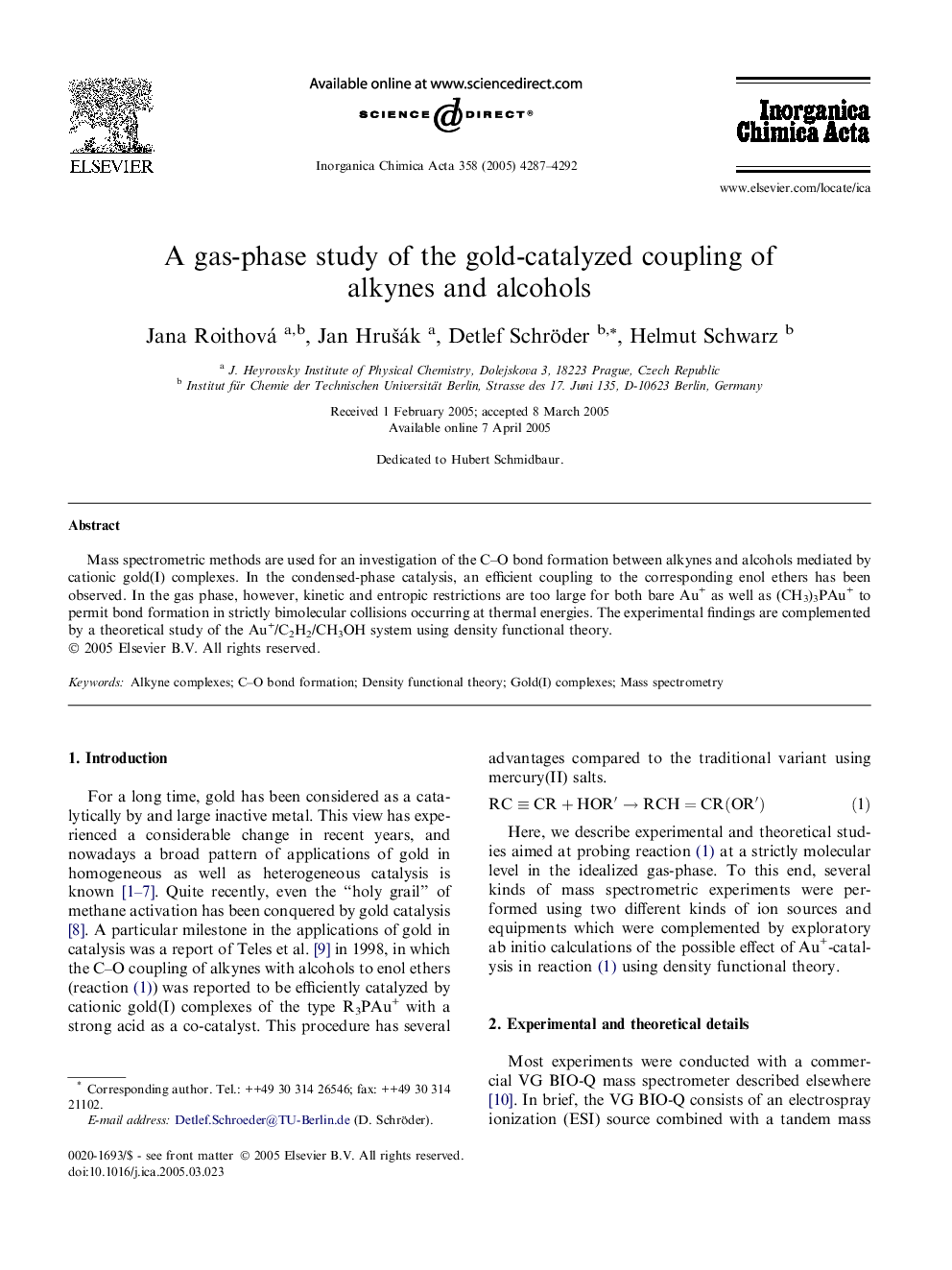| Article ID | Journal | Published Year | Pages | File Type |
|---|---|---|---|---|
| 1308403 | Inorganica Chimica Acta | 2005 | 6 Pages |
Mass spectrometric methods are used for an investigation of the C–O bond formation between alkynes and alcohols mediated by cationic gold(I) complexes. In the condensed-phase catalysis, an efficient coupling to the corresponding enol ethers has been observed. In the gas phase, however, kinetic and entropic restrictions are too large for both bare Au+ as well as (CH3)3PAu+ to permit bond formation in strictly bimolecular collisions occurring at thermal energies. The experimental findings are complemented by a theoretical study of the Au+/C2H2/CH3OH system using density functional theory.
Graphical abstractMass spectrometric methods are used for an investigation of the C–O bond formation between alkynes and alcohols mediated by cationic gold(I) complexes. In the condensed-phase catalysis, an efficient coupling to the corresponding enol ethers has been observed. In the gas phase, however, kinetic and entropic restrictions are too large for both bare Au+ as well as (CH3)3PAu+ to permit bond formation in strictly bimolecular collisions occurring at thermal energies. The experimental findings are complemented by a theoretical study of the Au+/C2H2/CH3OH system using density functional theory.Figure optionsDownload full-size imageDownload as PowerPoint slide
